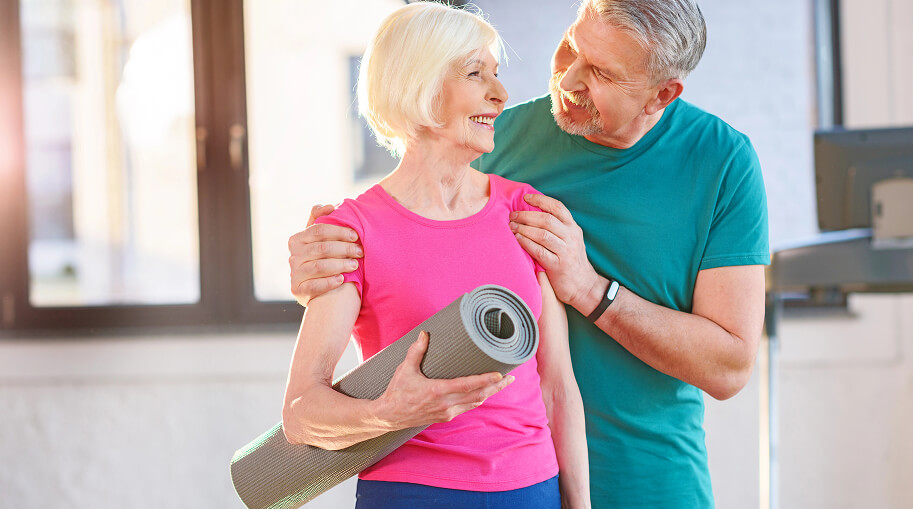Yoga is widely praised for improving flexibility and reducing pain, but for those living with hip pain or having undergone hip replacement, its safety often raises questions rarely explored in depth. Beyond general benefits, understanding how yoga interacts with hip joint mechanics and individualized limitations is crucial. This nuanced perspective helps patients make informed decisions about whether and how to incorporate yoga safely into their hip care routine.
How Hip Pain and Hip Replacements Affect Movement and Flexibility
Hip pain and hip replacements impact more than just the joint itself—they alter the way muscles, tendons, and nerves around the hip work together. Pain often causes subconscious changes in movement patterns, like favoring one leg or tightening surrounding muscles, which can reduce overall flexibility and balance. After hip replacement surgery, scar tissue and changes in joint mechanics can limit the hip’s natural range of motion, even when the implant is functioning well. These shifts can make certain movements uncomfortable or risky, especially those involving deep bending or twisting. This complex interplay between pain, muscle compensation, and joint mechanics is seldom discussed but critical to understanding why tailored movement practices like yoga must be approached carefully.
The Role of Yoga in Managing Hip Pain
Yoga offers more than just gentle stretching; it actively engages the deep stabilizing muscles around the hip that often go unnoticed in traditional therapies. By improving neuromuscular coordination, yoga helps retrain how muscles support the joint, reducing abnormal stresses that contribute to pain. Unlike many exercises that focus solely on strength or flexibility, yoga blends mindful movement with breath control, which can lower inflammation through the nervous system’s calming response. This mind-body connection is rarely highlighted but is essential for people with chronic hip pain or post-surgery recovery. Additionally, yoga encourages gradual progression and body awareness, helping individuals recognize early signs of joint strain before pain worsens, allowing safer long-term management of hip health.
Benefits of Yoga for Hip Osteoarthritis and Joint Health
- Promotes Synovial Fluid Circulation: Yoga encourages gentle, controlled joint movements that stimulate the production and circulation of synovial fluid. This natural lubricant nourishes cartilage and reduces friction inside the hip joint, which is essential for slowing cartilage breakdown—a benefit not often highlighted in standard arthritis care.
- Improves Muscular Balance and Symmetry: Hip osteoarthritis often leads to uneven muscle use as the body compensates for pain. Yoga helps identify and correct these subtle imbalances by engaging underused muscles and releasing tight ones, promoting better joint alignment and reducing uneven wear on the hip.
- Enhances Proprioception and Body Awareness: Yoga improves proprioception—the body’s ability to sense joint position and movement. This heightened awareness can help prevent falls or awkward movements that may aggravate the hip joint, a crucial but frequently overlooked aspect of managing arthritis safely.
- Supports Nervous System Regulation: Through mindful breathing and relaxation techniques, yoga reduces stress and inflammation by calming the nervous system. This indirect effect can lessen pain perception and improve overall joint health, linking mind-body wellness to physical outcomes in a way rarely discussed.
- Encourages Gradual, Pain-Free Movement: Unlike high-impact exercises, yoga promotes slow, deliberate movements that can be tailored to individual pain thresholds. This gradual approach helps maintain hip mobility without triggering inflammation or flare-ups.
- Strengthens Supporting Muscles: Yoga targets deep hip stabilizers, such as the gluteus medius and minimus, which are essential for joint support. Strengthening these muscles helps absorb impact forces and reduces stress on the hip joint itself.
- Fosters Long-Term Joint Health: Regular yoga practice encourages consistent, balanced movement patterns, which can slow the progression of osteoarthritis and maintain joint function longer than periods of inactivity or inconsistent exercise.
Yoga Poses to Avoid with Hip Pain
Certain yoga poses can unknowingly place excessive stress on sensitive hip joints, especially when pain or replacements are involved. Poses that force deep external rotation, such as lotus (Padmasana) or full pigeon pose (Eka Pada Rajakapotasana), may overstretch weakened ligaments and irritate inflamed tissues. Similarly, intense hip flexion poses like deep forward folds or low lunges can compress the joint, increasing discomfort.
Unilateral weight-bearing poses, such as warrior III (Virabhadrasana III), might exacerbate muscle imbalances and strain compensating muscles if done without proper alignment. Twisting poses that involve hip rotation under load, for example, revolved triangle (Parivrtta Trikonasana), can also aggravate joint pain by causing shearing forces in the hip.
What’s less discussed is how holding these poses for prolonged periods, even if they feel manageable initially, can gradually worsen microtrauma in the joint capsule or surrounding tissues. Listening to your body and limiting time in these positions is key to preventing flare-ups.
Tailoring Yoga Practice for Seniors with Hip Pain
For seniors with hip pain, yoga should be more than just gentle—it should be strategic. One often overlooked approach is sequencing poses to gradually “wake up” the hip stabilizers before engaging in full movements. This helps reduce reliance on larger, overworked muscles that can pull unevenly on the hip joint. Props like chairs, bolsters, and yoga blocks aren’t just for support—they can be used to teach joint-friendly alignment and build confidence in balance. Breath pacing is equally important; extending the exhale helps regulate the nervous system, which can reduce muscle guarding and make movements more comfortable. Finally, seniors often benefit from fewer transitions between poses, allowing them to focus on form and avoid strain from shifting in and out of weight-bearing positions too quickly.
Practical Tips for Starting a Safe Yoga Routine with Hip Issues
Start by practicing yoga at times when your hips feel least stiff—often mid-morning rather than first thing after waking. Warm up your joints with small, circular leg movements before entering any pose. Choose a yoga teacher familiar with joint replacements or chronic hip pain—ideally one who understands surgical anatomy. Keep your mat near a wall or chair for added balance support during standing poses. Rather than aiming for “deeper” stretches, focus on sensation and stability in each movement. Track how your hips feel 24 hours after practice, not just during. This delayed feedback is a more accurate measure of whether the routine is truly supporting your recovery or aggravating hidden strain.
Conclusion
Yoga can be a safe and powerful tool for managing hip pain and supporting recovery after hip replacement—but only when approached with knowledge, patience, and personalization. By avoiding risky poses, adapting your practice to match your body’s needs, and staying aware of how your hips respond over time, you can experience the true benefits yoga has to offer without compromising joint health. If you’re unsure where to start or want expert guidance tailored to your condition, our team at SFHips is here to help. Visit us or call (415) 530-5330 to schedule an appointment and explore the best movement plan for your hips.









